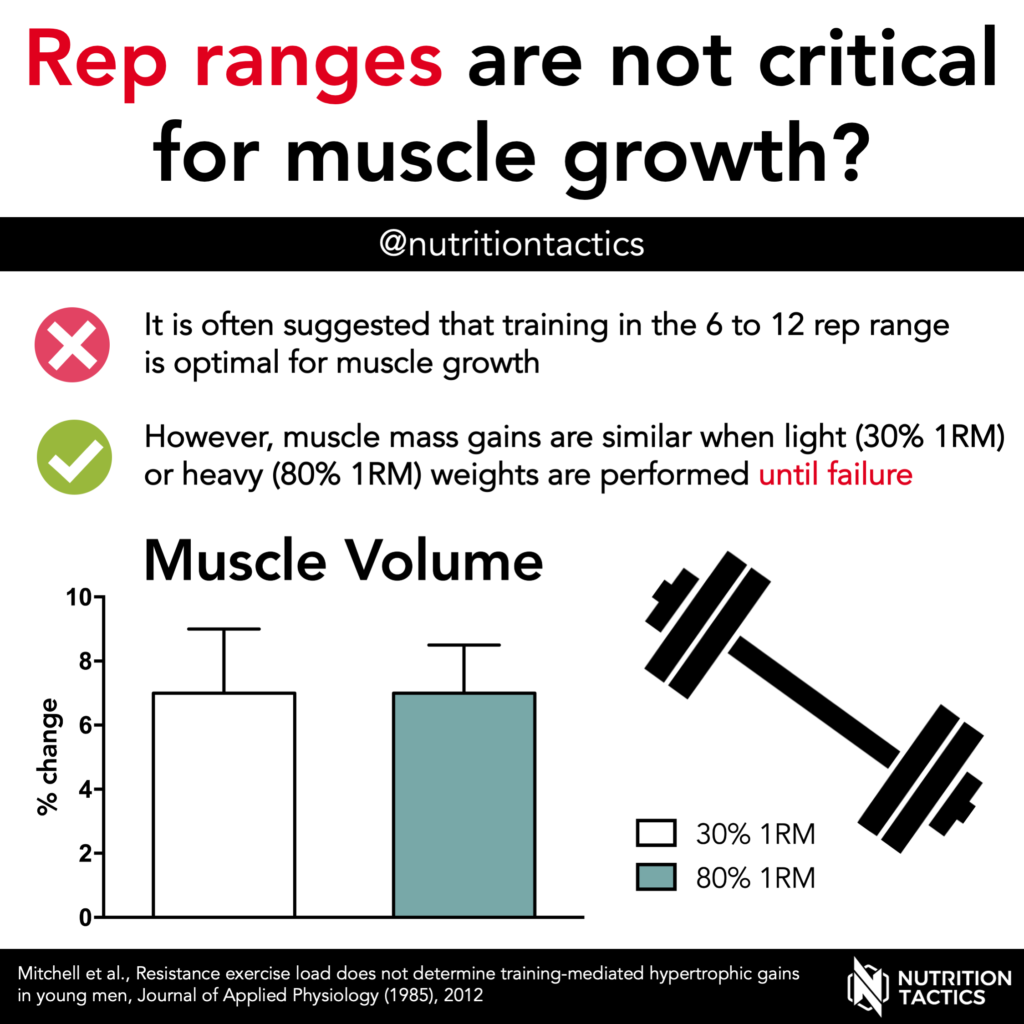Can light weights build big muscles?
It’s often suggested that using the weight you can lift for 6-12 reps is optimal for muscle mass gains. In agreement, the American Society of Sports Medicine recommends 8-12 reps with 60-70% 1RM (the maximum weight you can lift 1 time).
However, when reps are performed until failure (until you can’t do another one), you should have maximally recruited all muscle fibers. Therefore, it can be speculated that rep range is not that important, as long as you perform your sets until failure.
This study investigated the effect of both light and heavy weights on muscle mass gains. The ‘light’ group trained with 30% 1RM (for 30-40 reps), while the ‘heavy’ group trained with 80% 1RM (for 8-12 reps). Both groups trained until failure.
Both groups gained the same amount of muscle mass following 10 weeks of training.
This suggests that the rep range you train in is not that important as long as you train until failure.
Does this mean that every set has to be taken to failure? Not necessarily. Taking sets close to failure (1-2 reps in reserve for example) likely also gives an effective training stimulus and might be easier to recover from and allow you to train more.
In conclusion, light and heavy weights increase muscle mass to a similar extent when performed until failure.
Go to the next infographic in the resistance exercise series:
Blood flow restriction only works when combined with exercise?


Aren’t most, if not all, muscle fibers maximally recruited when doing lower reps? One would think the “quality” of reps matter.
Doing 30-40 reps feels like you only get 10 quality reps towards the end of the set.